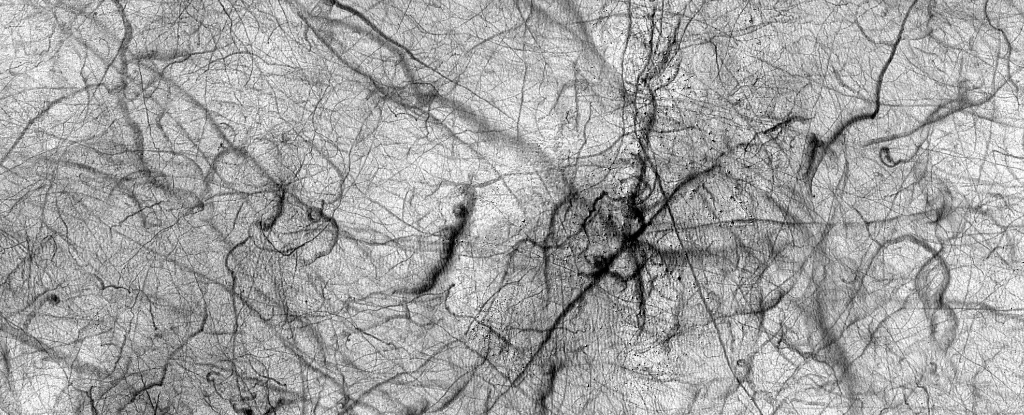Mars, often dubbed the ‘Red Planet’, has continued to enchant scientists and space enthusiasts alike with its captivating features. Recent advancements in technology have allowed for stunning images that reveal the dynamic processes shaping its surface. Among these phenomena, one of the most intriguing is the creation and movement of dust devils—vortex-like formations that whirl across the Martian landscape, affecting both its environment and the study of atmospheric dynamics.
An awe-inspiring image captured by NASA’s Mars Reconnaissance Orbiter in September 2022 showcases the Haldane Crater, where dust devils are prominent. This state-of-the-art imaging system, the High-Resolution Imaging Science Experiment (HiRISE), is capable of resolving minute details, allowing scientists to observe patterns and behaviors previously unseen. The newly released images reveal a tapestry of swirling dust devils, revealing the constant action of these swirling whirlwinds. By analyzing these striking visuals, researchers can trace the movement and lifecycle of dust devils as they arise, traverse the terrain, and eventually fade away.
Understanding the formation of dust devils on Mars requires a look into the planet’s atmospheric conditions. Unlike Earth, Mars has a sparse atmosphere composed primarily of carbon dioxide, allowing it to create different environmental behaviors. Dust devils are initiated by the intense solar heating of the Martian surface, where temperatures can vary drastically. As the ground becomes heated, warm air rises rapidly, creating areas of low pressure that draw in cooler, denser air. This dynamic interaction initiates a swirling effect, forming a dust devil that can lift particles of dust into the atmosphere. Sizes can vary from small, fleeting vortices to colossal formations stretching across kilometers, lasting for extended periods.
Dust devils play a significant role in the Martian ecosystem by redistributing dust particles across the planet. This activity affects not only the surface but also climate patterns. The movement of dust contributes to atmospheric phenomena, shaping weather systems and influencing temperature variations. For scientists, this relationship between dust and atmosphere enhances understanding of Martian climate processes. In addition, tracking the dispersion of dust allows researchers to study its accumulation over time, revealing how integrations occur within the Martian environment.
While dust devils are fascinating meteorological events, they present a dual-edged sword to the machines and rovers exploring Mars. They can serve as both a nuisance and a boon. Dust accumulation on solar panels, such as those on rovers, can severely hinder their functionality. A significant layer of dust blocks sunlight, lowering energy output and posing risks for ongoing missions. However, the same strong winds that carry dust can also have a cleansing effect, scrubbing off residue and improving the efficiency of solar receptors. Thus, the role of dust devils becomes a complex interplay of risk and reward for surface equipment.
As scientists delve deeper into the study of dust devils, they stand to gain crucial insights that could inform the design and planning of future Mars missions. Understanding the patterns of dust accumulation, as well as the behavior of these atmospheric phenomena, is integral to safeguarding equipment and improving technology aimed at exploring the planet. The ability to anticipate and mitigate the effects of dust devils could lead to longer-lasting and more successful missions, ultimately enhancing humanity’s understanding of the Martian environment.
The release of stunning images showcasing the dust devils on Mars opens a window into the dynamics of the Red Planet. By examining the complex interactions between the atmosphere and its geological features, scientists can forge ahead in their quest to understand Mars, paving the way for future exploration and discovery. The swirling entities of dust that grace its surface have much to reveal, beckoning researchers to unlock the mysteries of our neighboring planet.

